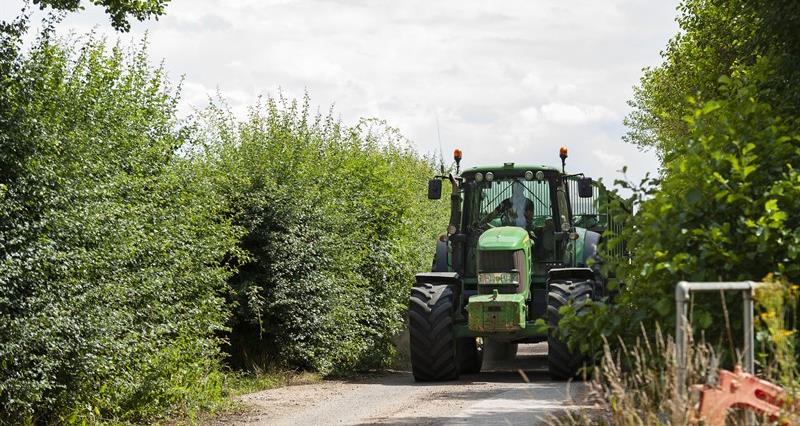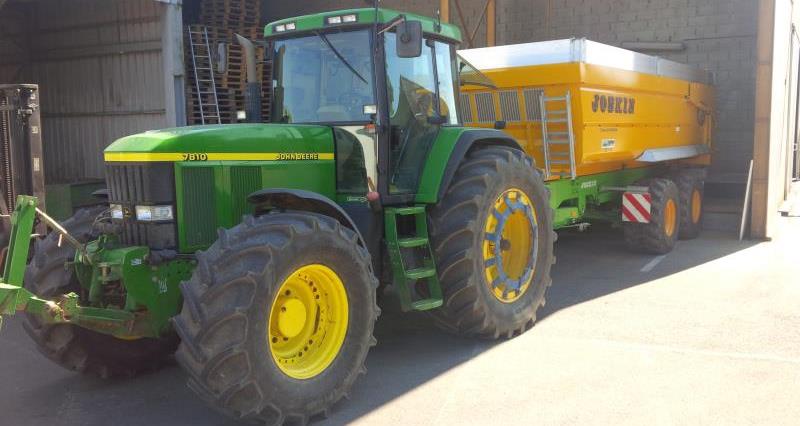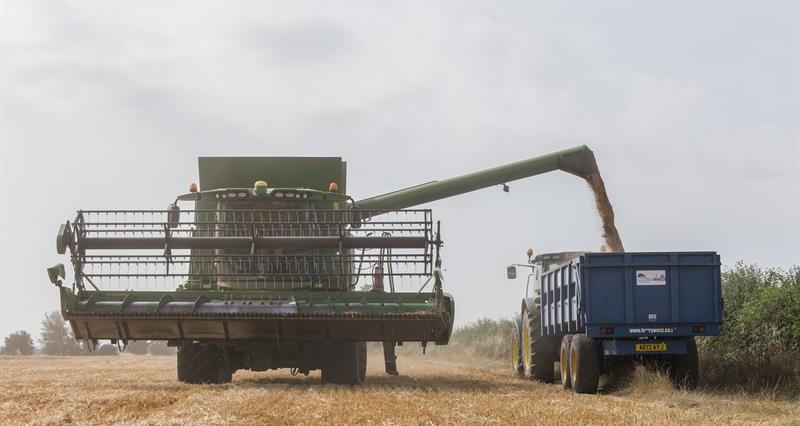The nature of farming now means that transporting goods along roads with tractors and trailers is becoming more and more of a necessity. When transporting goods, it is important to consider load security and to ensure that loads are secured in a safe way that complies with the law.
Transporting loads and the law
When transporting goods by vehicle or trailer, the law states that you must ensure the load is secured so that the use of the vehicle or trailer does not involve a risk of danger or injury to any person.
The law also states that:
‘The load carried by a motor vehicle or trailer shall at all times be so secured, if necessary by physical restraint other than its own weight, and be in such a position, that neither danger nor nuisance is likely to be caused to any person or property by reason of the load or any part of thereof falling or being blown from the vehicle or by reason of any other movement of the load or any part thereof in relation to the vehicle.’
Securing loads
The DVSA (Driver and Vehicle Standards Agency) published updated guidance on securing loads on HGVs and goods vehicles, with the aim of helping vehicle operators follow the law when transporting loads.
Whilst this guidance does not change the underlying legal position, those responsible for enforcing these provisions may look to the guidance to inform their approach. Non-compliance with the guidance may also make it harder to establish that a load was adequately secured if there is any dispute as to whether that was the case.
Each load being transported will have a different set of requirements specific to that situation. The type of load, level of load, weather conditions, types of roads, distance travelled, and other road users need to be considered as each load is being moved.
As the law states that a load must not cause a danger or nuisance to the vehicle operator or other road users, it provides a level of interpretation as to the measures that can be used to prevent any load from becoming a danger or nuisance. As such, what is deemed to be appropriate in one set of circumstances may not be appropriate in other circumstances.
The DVSA’s guidance
Following the release of the updated DVSA guidance in July 2023, the NFU identified some potential issues relating to the application of the guidance to the transport of agricultural loads.
The NFU raised concerns with the DVSA about its updated guidance, which we believe goes further than the law in some areas. While it is clearly important that loads are adequately secured so that they can be transported safely, one of our main concerns is the suggestion that all agricultural loads must be secured by sheeting regardless of whether the load settles below the height of the sides of the trailer.
In the NFU’s view, this appears to go further than the legislation requires, as some agricultural loads are unlikely to move or bounce out of the trailer even without sheeting. The NFU is continuing to engage with the DVSA regarding this issue.
The NFU always encourages members to transport loads safely and securely and advises that the current guidance, in conjunction with the following clarification, should continue to be followed until it is updated. It is important that farmers have a good quality risk assessment in place to demonstrate that the safety of the load has been adequately considered.
Sheeting clarification
After raising these concerns, the DVSA provided us with the following clarification about the sheeting requirements in its guidance:
All users, including employers, self-employed farmers and drivers, must assess and manage risk during loading, transport, and unloading agricultural products. This includes considering the risk of load movement during the journey and during unloading, along with other risks such as working at height and manual handling.
The updated DVSA guidance provides advice to help everyone comply with both road traffic and workplace safety legislation. This protects the user themselves, anyone they work with and other road users. The relevant legislation is linked to in part 1 of the guidance under ‘Load securing and the law’.
Part 4 of the new guidance provides detail on netting and sheeting loads and clearly states that users must sheet and/or net their loads to stop them from bouncing upwards on open vehicles unless the load is secured by other means. In part 1 of the guide, under the section – what a load securing system is – it states this can consist of the structure of the vehicle or trailer.
In practical terms, this suggests you can consider a load to be secure if your risk assessment shows that a load is below the height of the trailer/vehicle body to the extent that the structure of the vehicle sufficiently secures it without the need for any other security measure.
The risk assessment should include consideration of the effect wind could have and (more likely important for agricultural product) bounce out of the trailer/vehicle. Overall, users must make sure the load and the way it is secured does not present a risk of danger or nuisance to other road users.
Consider what steps are needed to ensure that you always comply with the law in this area at all times. This means that individuals must risk assess their load and take appropriate steps to ensure that the load and the way it is secured does not present a risk of danger or nuisance to others.
This includes considering whether a load needs to be sheeted, or otherwise restrained, in order to be secure.
It would be advisable to ensure that you have systems in place to demonstrate that the risks have been considered should you need to do so.
Penalties
If loads are not secured adequately, fines and points may be awarded. Drivers and employers are at risk as the law applies to drivers and anyone who causes or permits the use of vehicles deemed to be unsafe.
The DVSA has advised that roadside examiners will take a pragmatic approach, but action will be taken if loads are found to be unsafe.
Further advice
If you have any concerns or questions about load security or the DVSA’s updated guidance, you may contact NFU CallFirst for free initial legal advice and guidance on 0370 845 8458.
If you require more detailed independent legal advice, then NFU CallFirst can refer you to one of the NFU’s legal panel firms of solicitors. If you subscribe to the NFU’s Legal Assistance Scheme, then you may be eligible for a contribution towards any professional fees that you incur.
Alternatively, you may wish to appoint an appropriate health and safety adviser to assist with the preparation of risk assessments for your holding.



